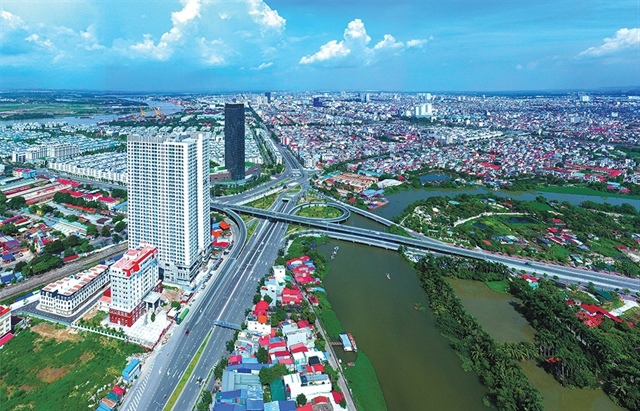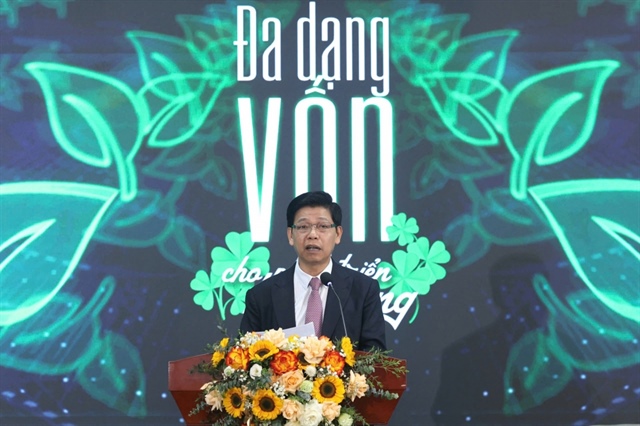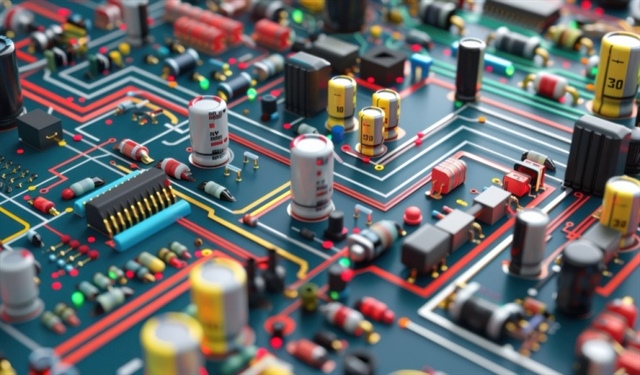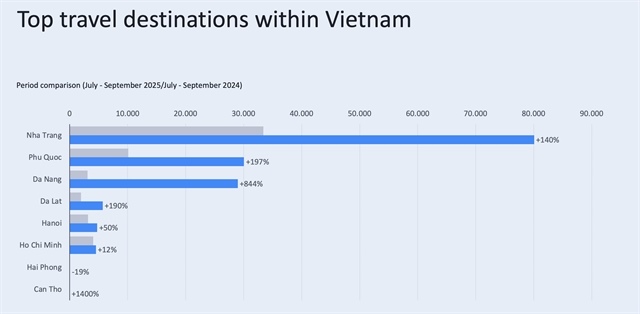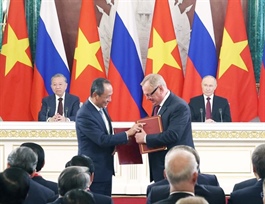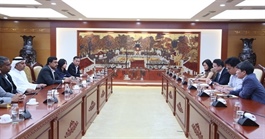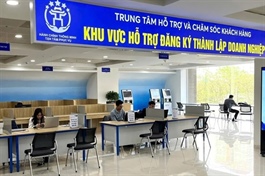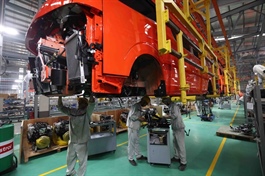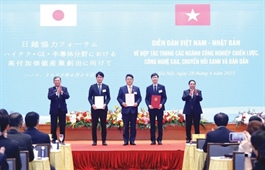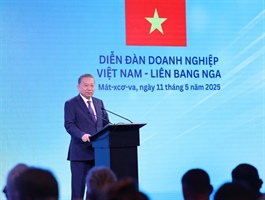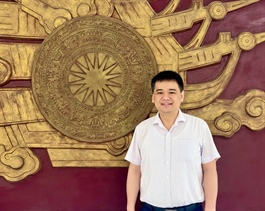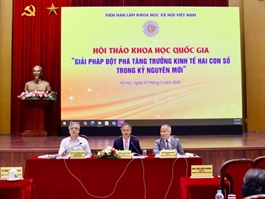Heroic Haiphong stands tall
Heroic Haiphong stands tall
Haiphong is set to be proudly conferred the “Heroic City” title during the 70th anniversary celebration of its liberation on May 13 in Thuy Nguyen district.
The “Heroic City” title, to be bestowed for only the third time in Vietnam, underscores Haiphong’s remarkable 70-year journey of development and its strategic position as a dynamic economic and cultural hub in northern Vietnam.
Tran Thi Hoang Mai, director of Haiphong Department of Culture, Sports, and Tourism, said in April that the city is meticulously planning a ceremony to honour the significant milestone.
Haiphong is dubbed the eastern frontier of Vietnam, with a strategic position throughout the nation’s history. The port city has many important river mouths flowing into the sea with over 300 large and small islands, including Cat Ba, Long Chau, and Bach Long Vi islands, which hold important positions in the Gulf of Tonkin.
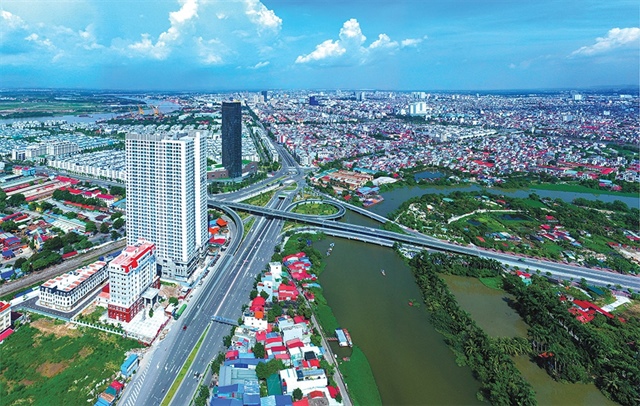
Heroic Haiphong stands tall, photo Haiphong |
From the late 19th century to early 20th century, as a major port for Tonkin, an important transportation hub on international maritime routes, Haiphong became one of the cradles marking the birth of the Vietnamese working class and the workers’ movement against French oppression.
During the anti-Japanese resistance movement, Haiphong’s Kien An area was where the Viet Minh movement developed strongly. In 1945, the people of Kim Son (now Kien Thuy) rose up against the Japanese fascists, which led to the August Revolution in the northern coastal region.
This success marked the debut of the Democratic Republic of Vietnam. The French, however, aimed to use force to re-establish their rule over the country.
The following year, the resistance war against the French broke out in Haiphong. The entire Party, army, and people of Haiphong’s Kien An successfully conducted a comprehensive people’s war in the deeply occupied enemy area, eventually contributing significantly to the historic Dien Bien Phu victory in 1954. This forced the French to sign the Geneva Accords, ending the war and resuming peace in the Indochina.
Continuing as a fortress
After the city’s liberation on May 13, 1955, Haiphong continued to build itself as the only international trade gateway by sea, an industrial centre, and a steel fortress on the eastern coast of the country. Haiphong was honoured to be visited by President Ho Chi Minh nine times.
During the years of national resistance against the US, Haiphong was the gateway for receiving international aid and the starting base of the ‘Ho Chi Minh Trail at sea’. Due to its particularly important position, during the two destructive wars against the northern region by air and naval forces, Haiphong was a fierce focal point.
Then, over 12 days and nights in 1972, Haiphong and Hanoi took part in heroic battle in the skies, known as “Dien Bien Phu in the air”.
When summing up the two resistance wars, many factories, businesses, ports, districts, communes, wards, towns, and individuals were awarded noble titles of the People’s Armed Forces by the Party and the state.
In 1980, Haiphong transformed its agricultural system. After successfully implementing a new model with Doan Xa Cooperative in Kien Thuy district, Vietnam soon recognised household contracting and applied the system throughout the entire country. Since then, Vietnam has ensured food security and quickly become one of the world’s largest rice exporters.
Worthy of the title
Today, Haiphong is much more than an agricultural centre. Since the turn of the century, the locality has issued major overhaul resolutions to align with the industrialisation and modernisation of the entire country, and in particular development of the city itself, with a long-term vision.
With its strategic position, Haiphong is now an international trade gateway of the northern region, directly connecting with global maritime routes through the Lach Huyen deepwater port system.
Modern transportation infrastructure such as the Hanoi-Haiphong expressway, Cat Bi International Airport, and Bach Dang Bridge has underpinned the city’s progress in investment attraction and regional economic development.
In 2018, the Politburo officially identified Haiphong as the main gateway to the sea for northern localities, a driving force for the development of the northern region and the entire country. The designation underscores Haiphong’s strategic role in national development and its potential as a central hub in the region.
Industrial zones such as DEEP C, Nam Dinh Vu, and Trang Due have attracted global industrial and tech giants like LG, Pegatron, and USI, contributing to restructuring the economy towards modernity and sustainability.
In recent years, Haiphong has secured one of the highest regional GDP growth rate in the country, becoming an attractive destination for both domestic and foreign investors. The city’s regional GDP was estimated at approximately $11.4 billion in 2024, reflecting an 11 per cent increase from 2023.
In 2024, Haiphong’s economy’s scale reached $4.76 billion, ranking third in the country and 2.34 times higher than in 2020, 3.4 times higher than in 2015, and 5.16 times higher than in 2010.
The city’s economic structure continues to shift towards reducing the proportion of agriculture, forestry, and fisheries, and increasing the proportion of industry and construction. Industry and services are developing strongly, shifting towards modernity. There is a high focus on completing economic components, associated with green-digital transformation and high-tech application.
Not only developing the economy, the city also focuses on building a green, modern urban area, improving the quality of life for its residents. Diverse projects on digital transformation, e-government, and smart cities are being vigorously implemented, gradually making Haiphong one of the model cities for the Industry 4.0 era.
Moreover, the city emphasises the preservation and promotion of traditional cultural heritage values distinct to the area. By 2024, the city was home to 565 recognised relics at various levels, 12 intangible cultural heritages, one UNESCO-recognised World Natural Heritage: the Halong-Cat Ba archipelago.
|
“Haiphong will celebrate the 70th anniversary of the city’s liberation on the exact historical anniversary of May 13. This is an opportunity for the leaders and people of the port city to look back and evaluate the very glorious achievements of the past journey,” said Nguyen Van Tung, Chairman of Haiphong People’s Committee, last month.
“We have the right to be proud of implementing Uncle Ho’s advice when he visited Haiphong in October 1946: when everyone unites, surely Haiphong will become a model city for the whole country,” Tung added.
- 09:38 13/05/2025


